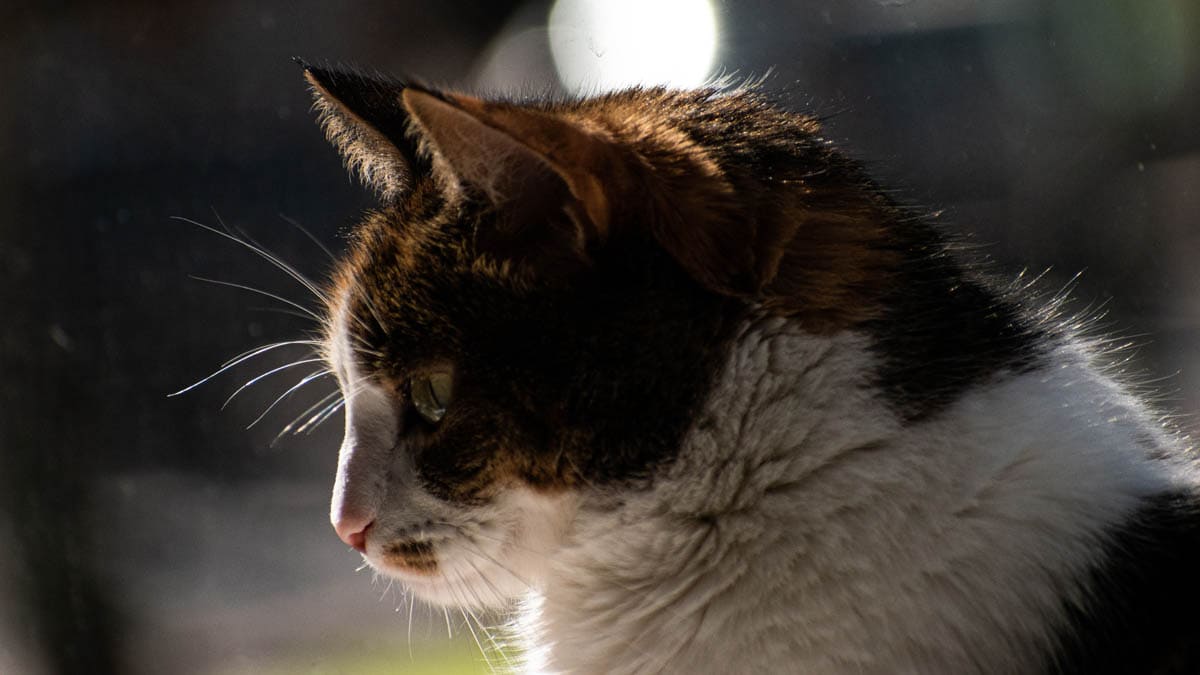Cancer is the uncontrolled division of abnormal cells that can originate in any part of the body such as the mammary glands, lungs, skin, and so on. By nature, cats are exceptional at hiding signs of sickness, which can make it difficult for their human carers to know something is wrong. This article outlines subtle and not so subtle signs that a cat may have cancer.
Weight loss
I have had two cats lose weight under my nose without being aware. A fur coat can often mask weight loss. It was only when I picked up both cats that I discovered considerable weight loss. One had hyperthyroidism, which is also a common cause of weight loss, the other had cancer.
Unexplained bleeding or discharge
Nosebleeds, blood in the feces (which can be dark and tarry, or bright red) or urine, or any other type of unexplained bleeding or discharge from the skin or an opening (mouth, anus, nose, ears).
Nosebleed was the first symptom of cancer in both of my two cats who had cancer.
Odours
Unpleasant odours from the mouth, anus, vagina, ears or skin. This is often be accompanied by a discharge.
Sores or ulcers which don’t heal
Sores on or in the body which don’t heal within a few days. Common locations include the ears, nose and mammary glands.
White-haired cats with pink skin are at increased risk of squamous cell carcinoma while sores or ulcers on the nipples or breast may be cancer (both male and female cats can develop mammary gland cancer).
Other cancers which can cause ulcers or sores include lymphoma, melanoma, basal cell carcinoma, anal sac gland carcinoma.
Difficulty breathing
Coughing, wheezing, panting, rapid breathing, laboured breathing, all suggest breathing difficulty. Cancer can cause fluid can build up around the lungs.
Vomiting and/or diarrhea
Gastrointestinal disturbances are one of the leading reasons people take their cat to a veterinarian. There are dozens of possible causes of vomiting and diarrhea in cats, which include gastrointestinal lymphoma.
Lump or bump which doesn’t go away
Dr Sue Ettinger, a veterinary oncologist recommends any lump which is larger than the size of a pea and has not gone away after a month should be checked out by a veterinarian.
Lumps can be benign or cancerous, some causes include squamous cell carcinoma, mast cell tumour, basal cell tumour, melanoma, sebaceous gland tumour, mammary gland tumour, liposarcoma, hemangiosarcoma, and injection site sarcoma.
Change in bowel or bladder habits
Diarrhea, constipation, blood in the stools, an increase in urination, pain when urinating or defecating, and going to the toilet outside the litter tray.
Difficulty eating
This can be due to oral pain or difficulty swallowing. Cats aren’t the most compliant animal when it comes to examining the mouth, and oral cancers can be easy to miss between annual veterinary examinations.
Symptoms may include loss of appetite, aversion to hard food, dropping food, drooling, bad breath and difficulty swallowing.
Lethargy
This is such a vague symptom, and any cat lover will know how much time cats spend sleeping. Cancer can cause lethargy in several ways, from decreased production of red blood cells in the bone marrow, to blood loss, changes in hormones, and organ dysfunction. Signs of lethargy include:
- Changes in routine, such as no longer greeting you at the door or winding around your legs for breakfast.
- Sleeping more, most cats will have routine periods when they are active.
- Loss of interest in playing.
- Spending more time indoors (if the cat is allowed to free-roam).
- Changes in grooming habits.
Prevention
In most cases, it is not possible to prevent cancer. But early detection is important as treatment is often less complicated and this increases the chances of treating cancer before it has spread (metastasised) to other parts of the body such as the lungs, liver or spleen.
- Schedule annual check-ups with your veterinarian, this should increase to bi-annual check-ups once a cat reaches seven.
- Avoid the use of synthetic chemicals in the home where possible, switch to natural products such as white vinegar and baking soda to clean with.
- Don’t smoke inside the house.
- Avoid sun exposure, especially with white cats who are more vulnerable. Keep cats indoors during the hottest part of the day and always ensure cats have adequate shade.
- Desex your cat.
- Keep your cat at a safe weight.
- Once a month, perform a physical examination on your cat. If you have scales, weigh him, if not, pick up the cat to see if there is any noticeable weight loss. Run your hands along the sides and spine of the cat to see if you can easily feel the ribs and spine? It should be possible to feel them, but the cat should not feel overly bony. Check the skin for lumps and bumps, again use your hands to feel.

